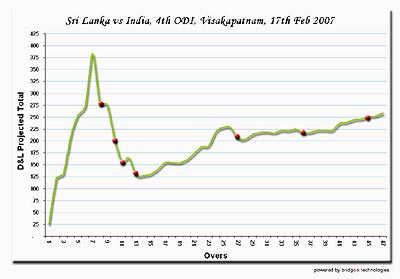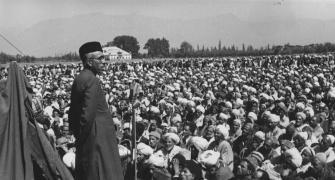The Duckworth & Lewis (D&L) method has been used for nearly a decade now to determine the par score during an ODI game.
While the D&L method has been used in the 2nd innings of the game, with a bit of 'reverse engineering', it is possible to apply it during the 1st innings as well to predict the final total for the innings after each over (or ball for that matter). Without going into too much detail, here is how it works;
The D&L calculations are driven by a Table (Grid) of Wickets (Columns) and Balls (Rows), with the intersection of each row/column giving the % of resource used by the team at any given point in time.
For example, after 10 overs, a team will have used 15.8% of its resources if it has lost one wicket, and 22.2 % of its resource if it has lost two.
Hence, it's becomes mathematically possible to predict an ideal final score at any given point in the innings (by using the formula: Current score / Used resource * 100).
So if a team has scored 60 for the loss of 2 wickets, we can predict that the Team will score 270 runs (60/22.2*100) and so on and so forth. If we apply this formula after every ball, we get a very good idea of how the Innings progressed, as is clear from the chart for Sri Lanka's 1st innings today.

The only problem with this method is that it can give bizarre results in the first 10 overs. For example, if the team scores 50 for no loss in 5 overs, it will predict a score of over 1,000 runs. But it gets pretty interesting after the 10th over.
This may not be an exact science, but it definitely makes following the first innings of an ODI more interesting.








